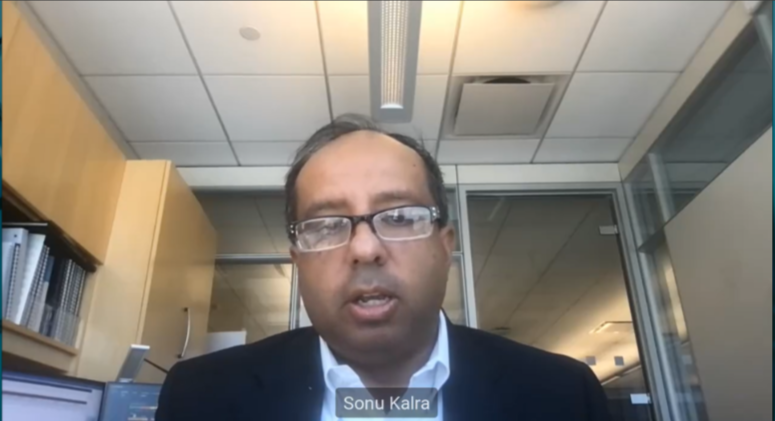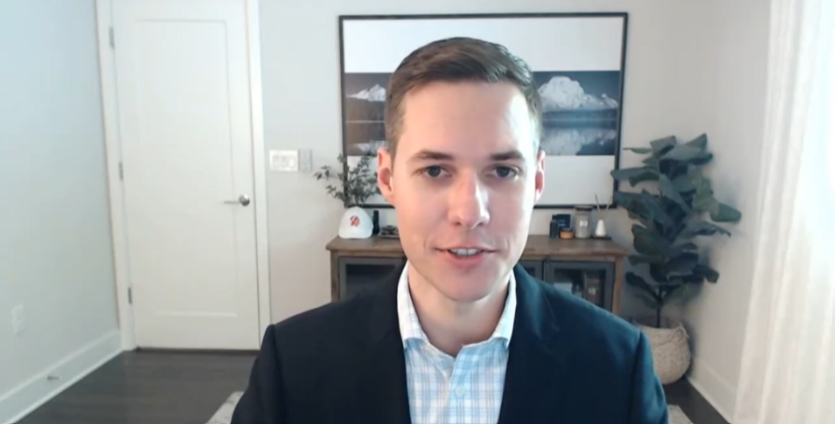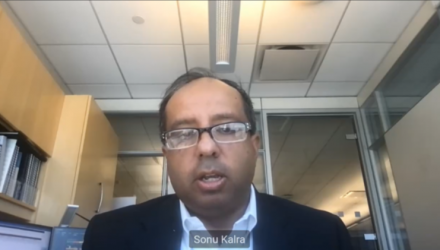The biggest growth companies continue to increase their concentration in major equity indexes this year. It’s not surprising that investors are starting to rethink their exposure to large-caps, given concentration risk and ongoing market uncertainty.
Tom Lydon, vice chairman of VettaFi, hosted a panel with Fidelity’s Sonu Kalra and VanEck’s Coulter Regal in the recent Equity Symposium to discuss opportunities in large-caps looking ahead.

Fidelity Investments portfolio manager Sonu Kalra

VanEck product manager Coulter Regal
Equity Bulls on Parade?
When polled, over 60% of respondents believed that equities will end the year in a bullish fashion. Coulter Regal, CFA, product manager at VanEck, agreed it’s a perspective the firm sees reflected by clients currently. He was also clear to underscore, however, the uncertainty that still dominates markets.
Sonu Kalra, portfolio manager at Fidelity Investments, sees reason for the bullish outlook as Federal Reserve rate hikes draw close to an end.
“The market is a forward-looking discounting mechanism and that’s… what you’re seeing here,” Kalra explained.
Large-cap equity performance this year has continuously surprised to the upside. Its performance defies the pessimism regarding equities and large-caps at the beginning of the year. 2022 proved a challenging and painful year for many large-cap growth stocks, with significant drawdowns for much of the year. It left growth companies with a “mismatch in the growth rate in the revenue growth and the operating structure of these companies,” he added.
In the wake of underperformance, at the end of 2022, many large-cap growth companies were forced to make a number of “difficult decisions” according to Kalra. That has resulted in a “right-sizing of the cost structure” this year that’s led to better earnings estimates and performance.
Concentration Risk and Looking Long Term in Large-Caps
A conclusion to Fed rate hikes would be a boon for equities. That, alongside the wave of AI adoption, are boosting large-cap growth companies. Generative AI is what Kalra refers to as “the fourth technology transition that we’re seeing” after the internet, smartphones, and cloud capabilities.
That said, equity performance this year has been driven almost single-handedly by the “Magnificent Seven.” Regal attributes it to a bounce-back from the performance of last year alongside sweeping adoption of AI.
The Magnificent Seven makes up about one-fourth of the S&P 500 market cap but currently accounts for two-thirds of its performance this year. “I think you’re seeing a lot of those large-cap names that have really gone on a tear following a pretty abysmal ’22… you’re seeing those names bounce,” he said.
Fidelity seeks to identify mispriced companies regarding both their absolute rate of growth as well as that growth’s long-term sustainability.
“The market does a decent job of predicting growth rates in short periods of time,” Kalra said. However, it “does a terrible job predicting growth rates over longer periods.”
This gives active managers an advantage, according to Kalra. The Fidelity Blue Chip Growth ETF (FBCG) seeks companies with consistent, double-digit earnings growth. FBCG uses the Russell 1000 Growth Index as its benchmark. That index has historically outperformed the S&P 500 on a trailing one-, five-, 10-, and upward of 25-year basis.
Widening the Large-Cap Playing Field
Meanwhile, concerns of equity concentration in the broad S&P 500 have given rise to interest in equal-weighted or strategies with an active tilt, Regal noted.
“Clients that have had money and have done well so far this year in the broad-based market’s indexes… might be starting to look at perhaps taking a little off the table from some of those strategies,” he added. Among strategies they are considering are equal-weight ones that offer exposure beyond just the highly concentrated big growth names.
The VanEck Morningstar Wide Moat ETF (MOAT) targets “high quality companies with attractive valuations” through an equal-weight strategy. Wide-moat companies can provide more durable performance potential over longer time horizons. The fund currently reflects a shift from growth companies like Meta and toward value. This pivot to value is reflected through exposure to banks like Charles Schwab.
When it comes to market risks, there are a lot of factors to contend with. These include Fed policy, inflation, if/when a recession will happen, rising commodity prices, and more. Add into the mix geopolitical risk in tensions between U.S. and China, tech concentration, and other factors, and it leads to heightened uncertainty and market volatility.
While market uncertainty and volatility can certainly be stressful for investors and portfolios, it has its uses. “With uncertainty, there is opportunity,” Kalra said. It’s opportunity that funds like FBCG and MOAT hope to capitalize on in the months to come.
For more news, information, and analysis, visit the Beyond Basic Beta Channel.







